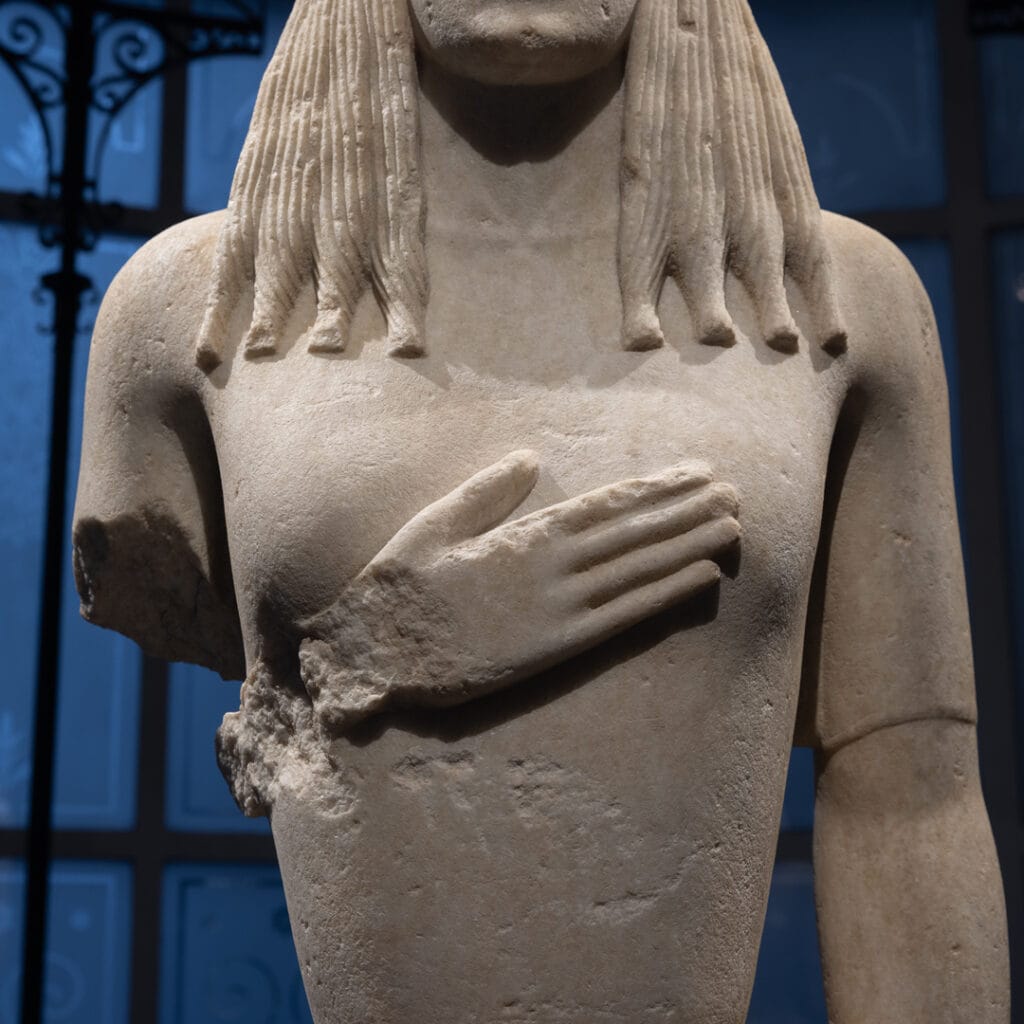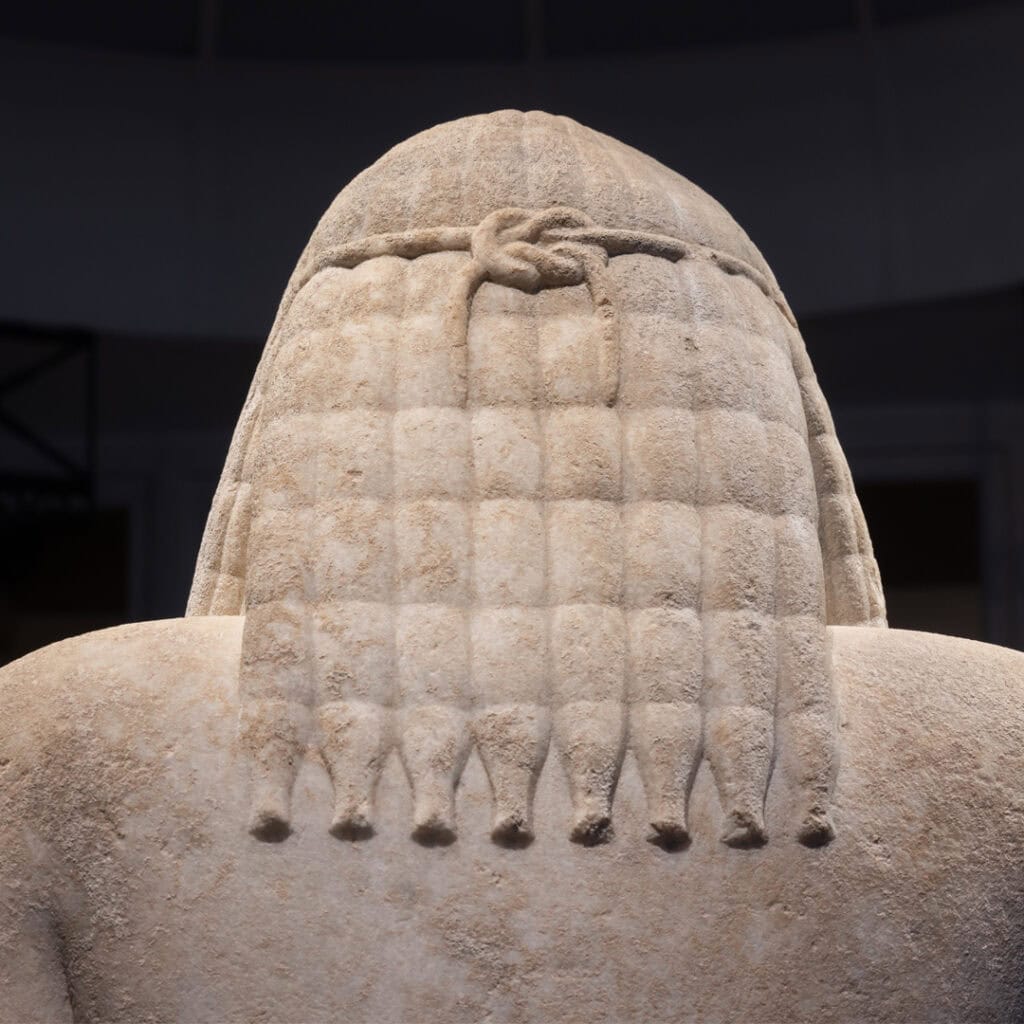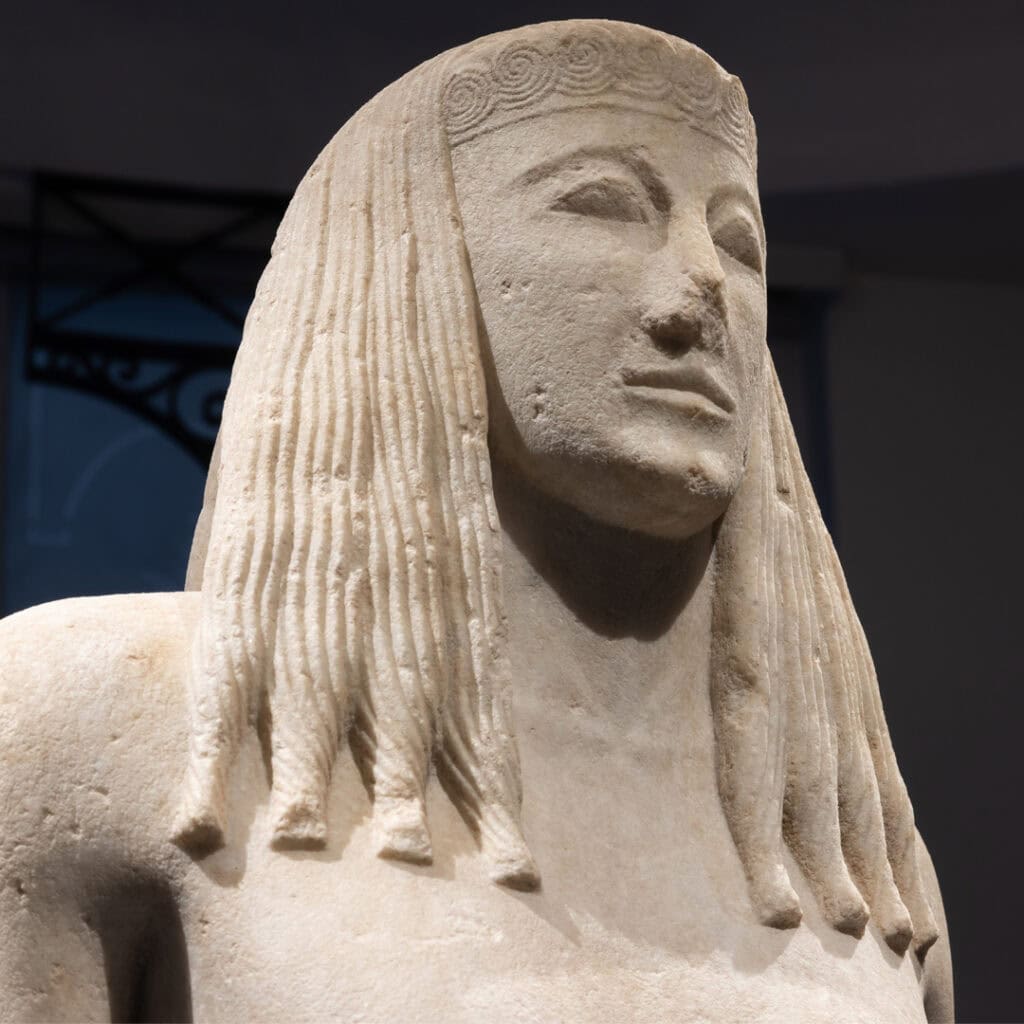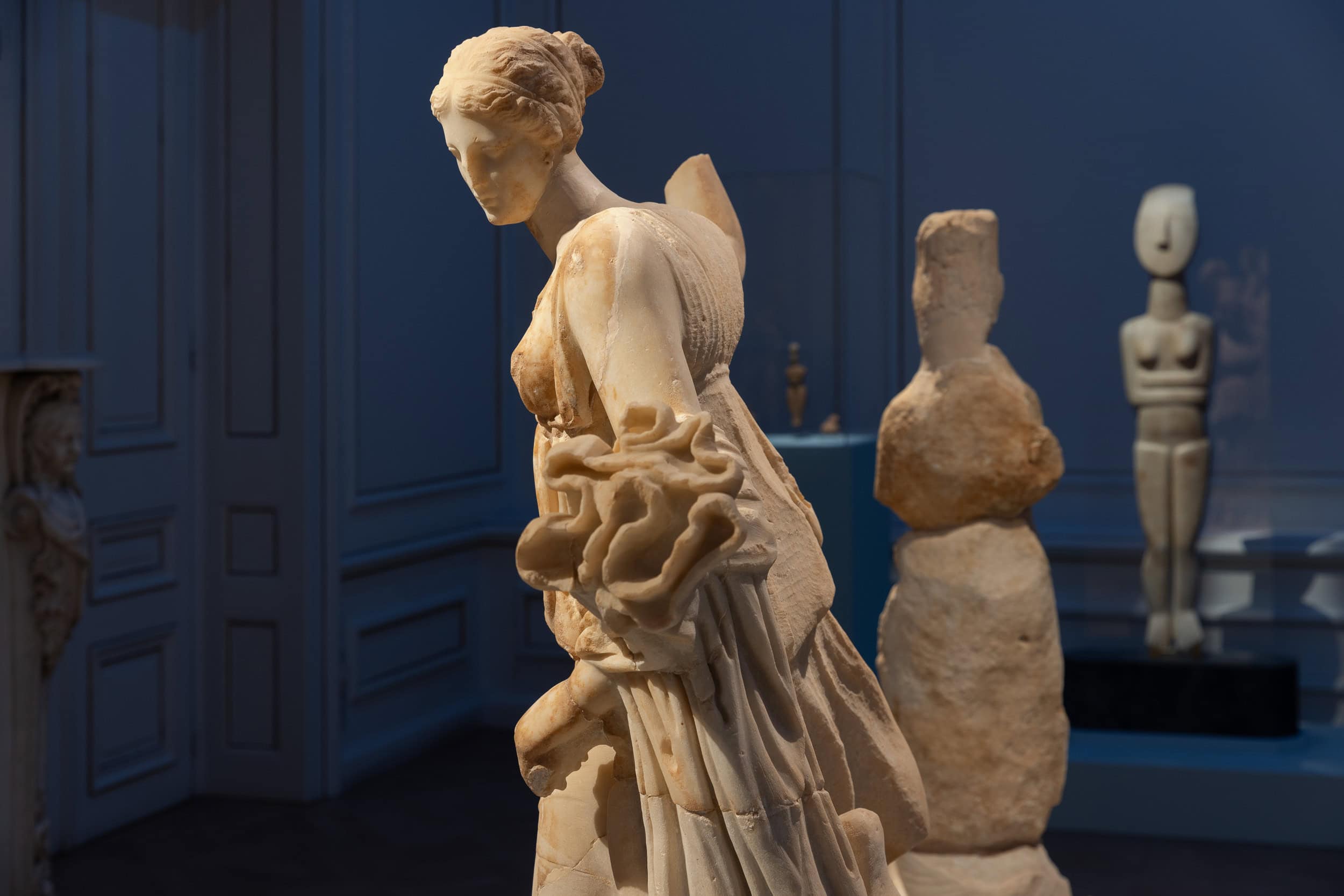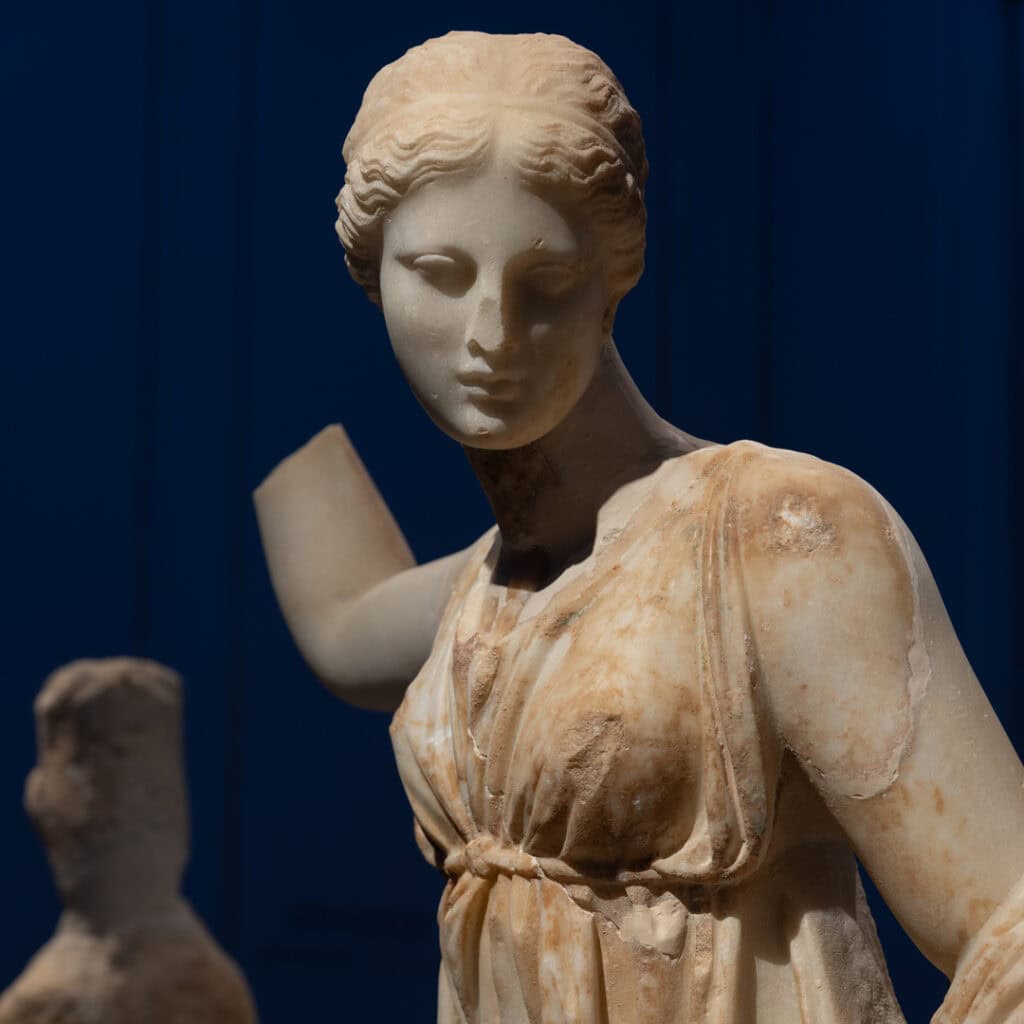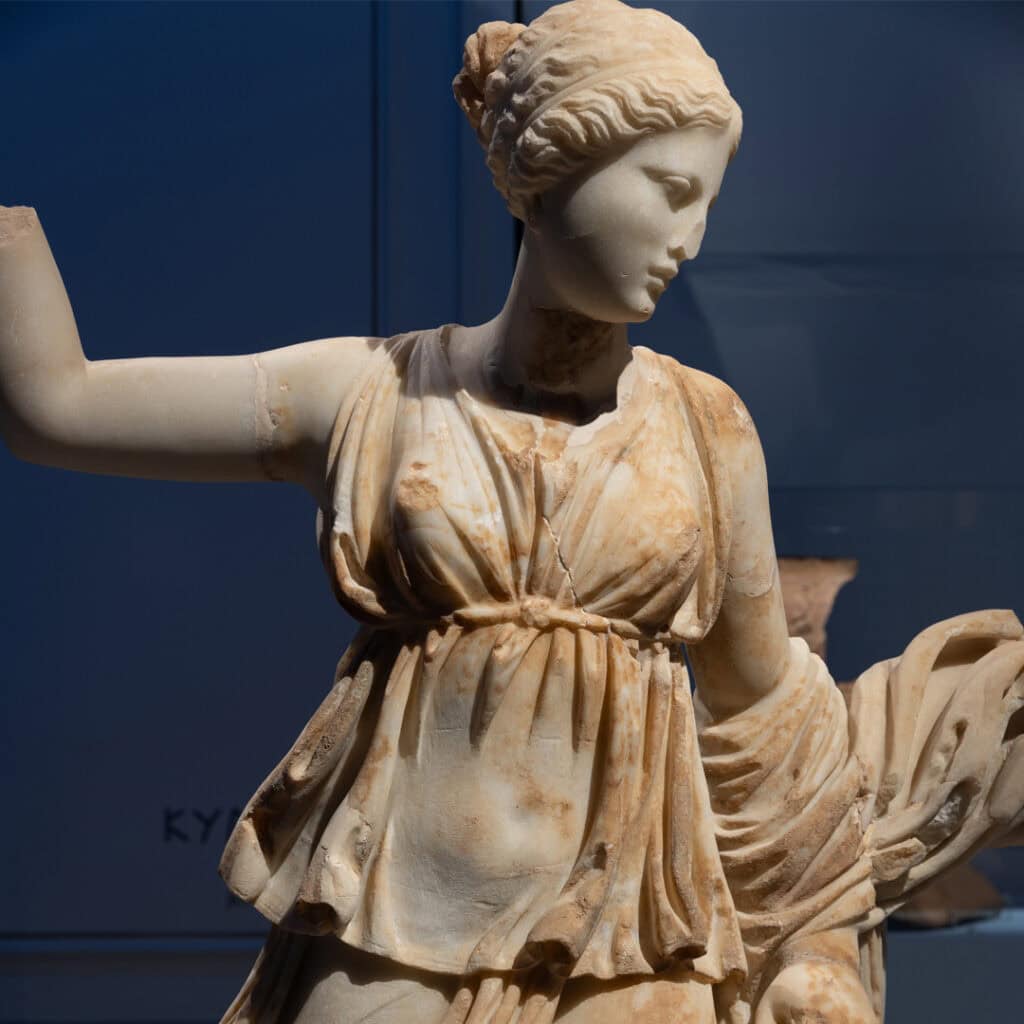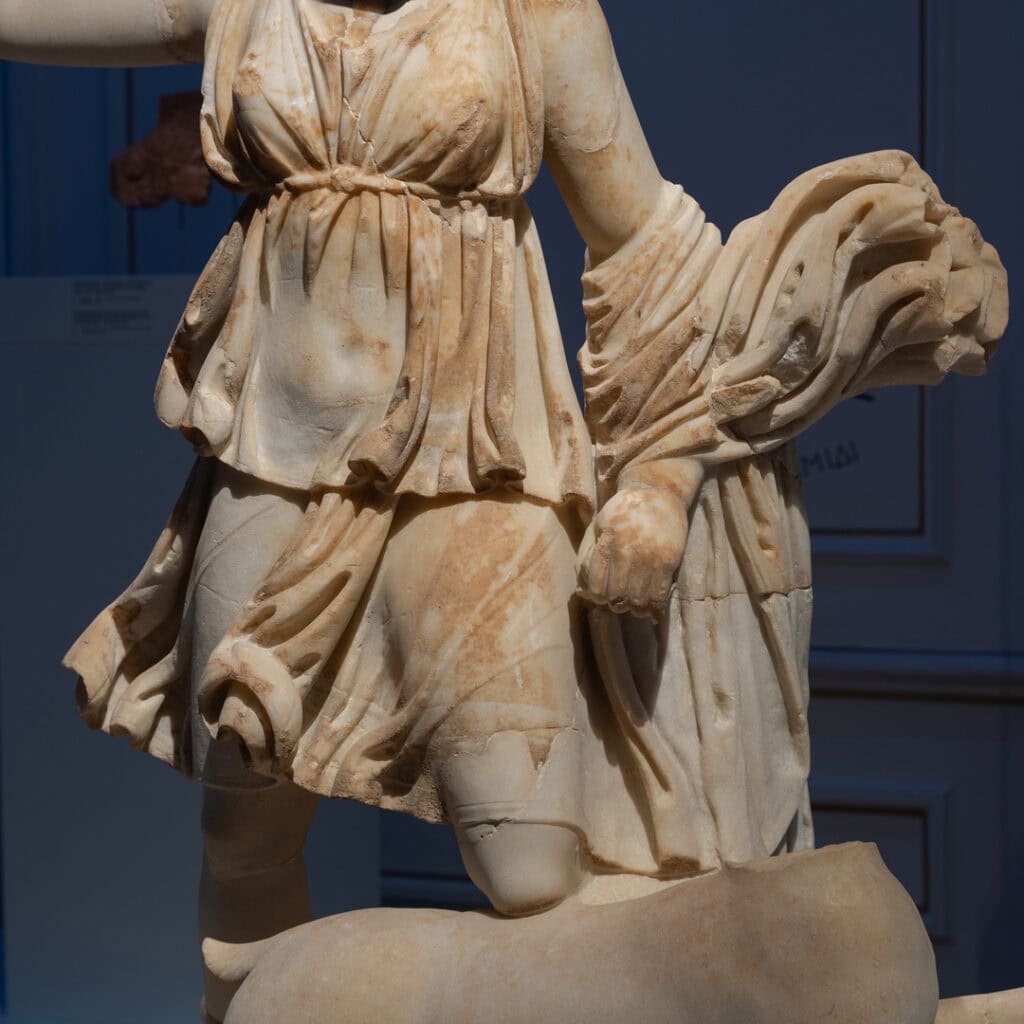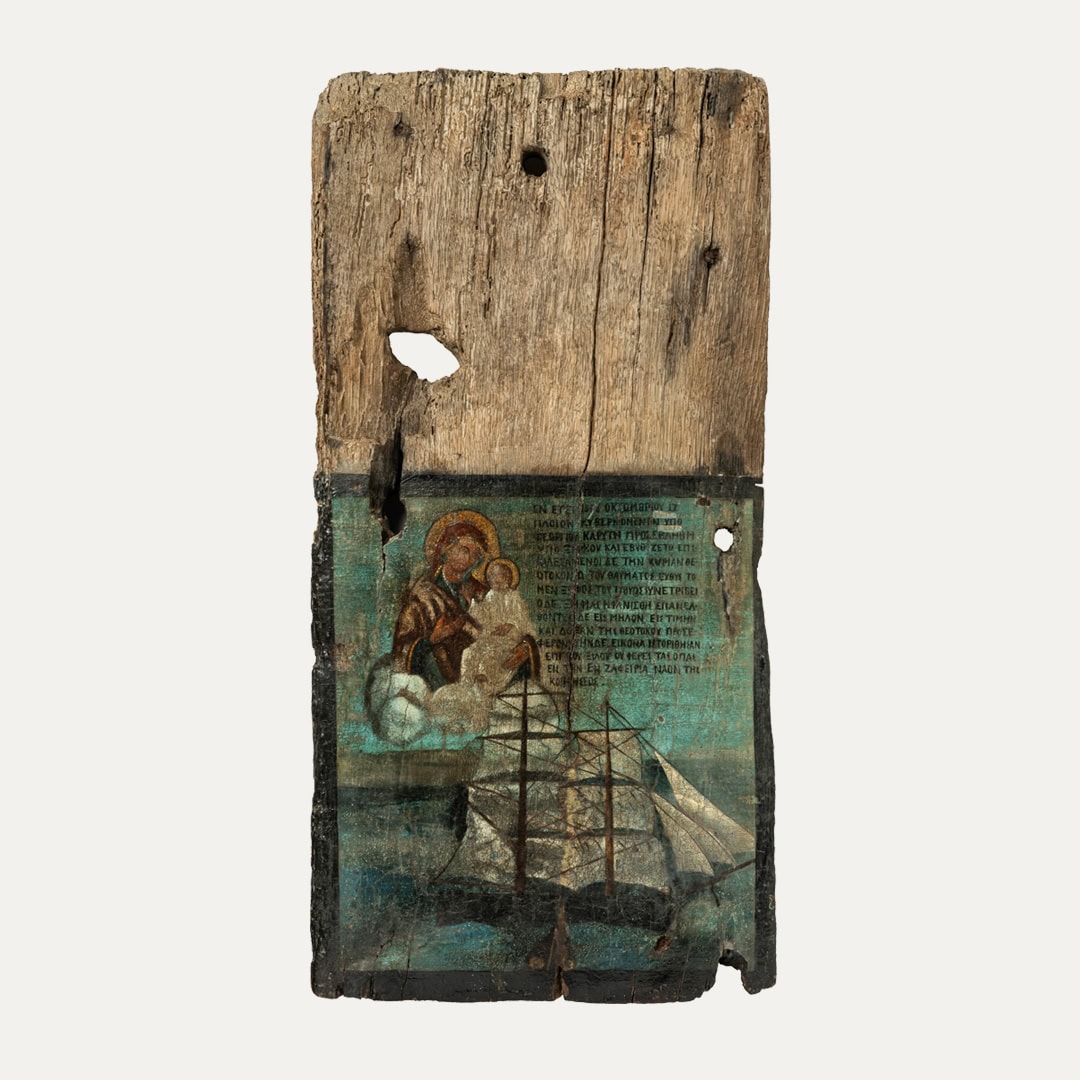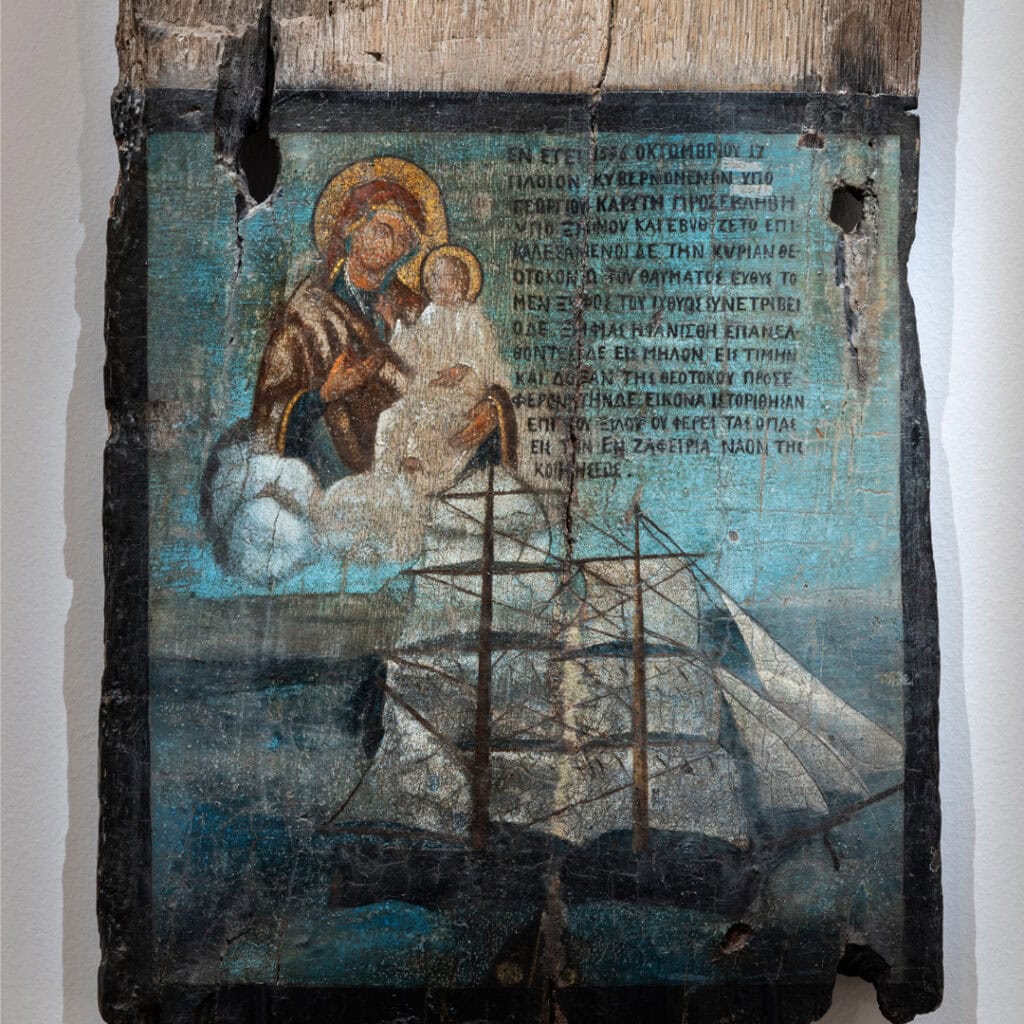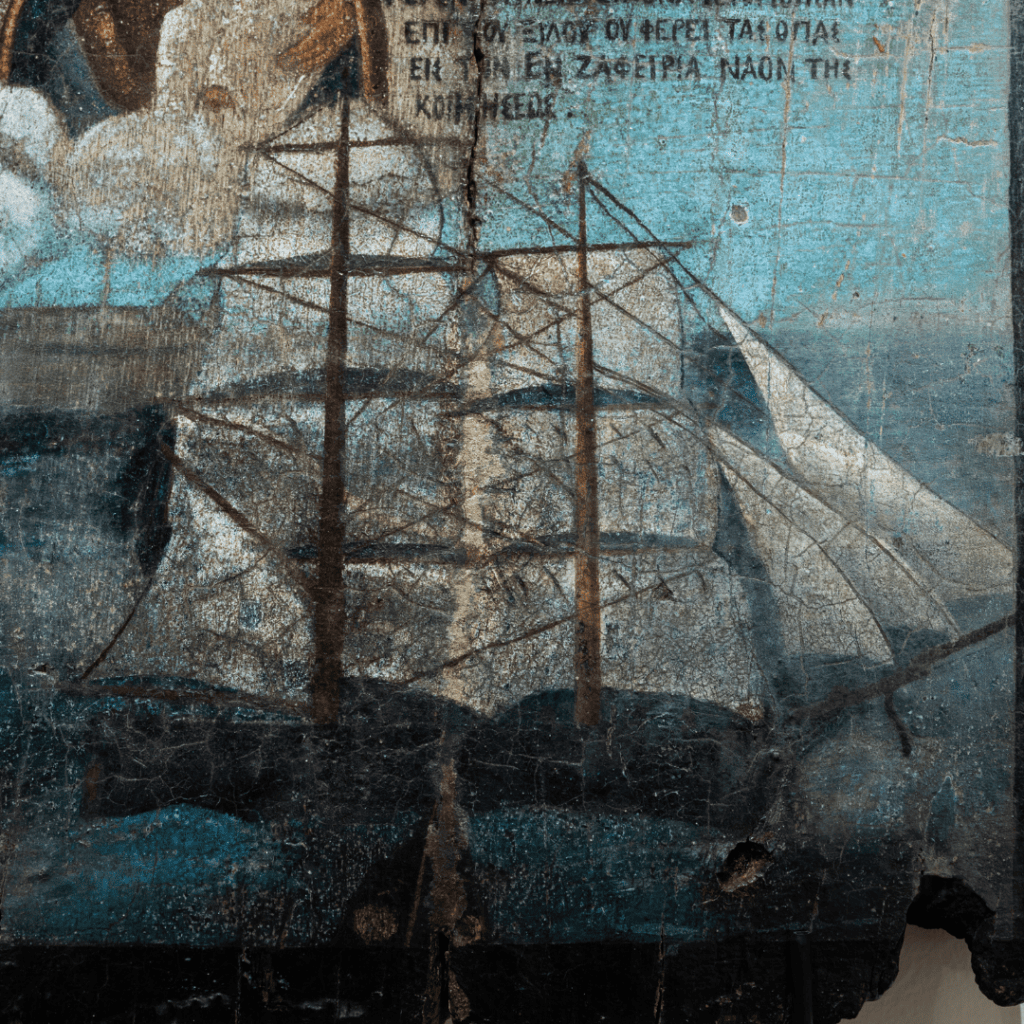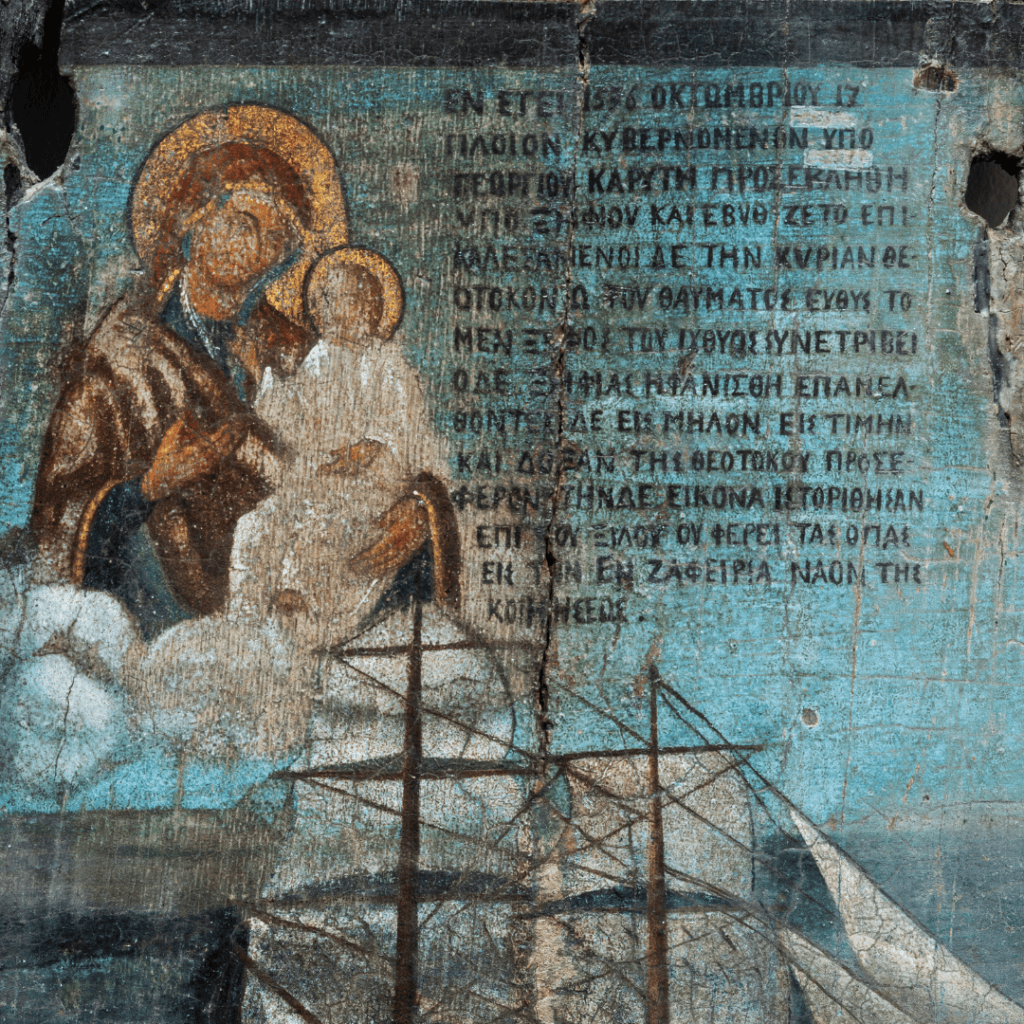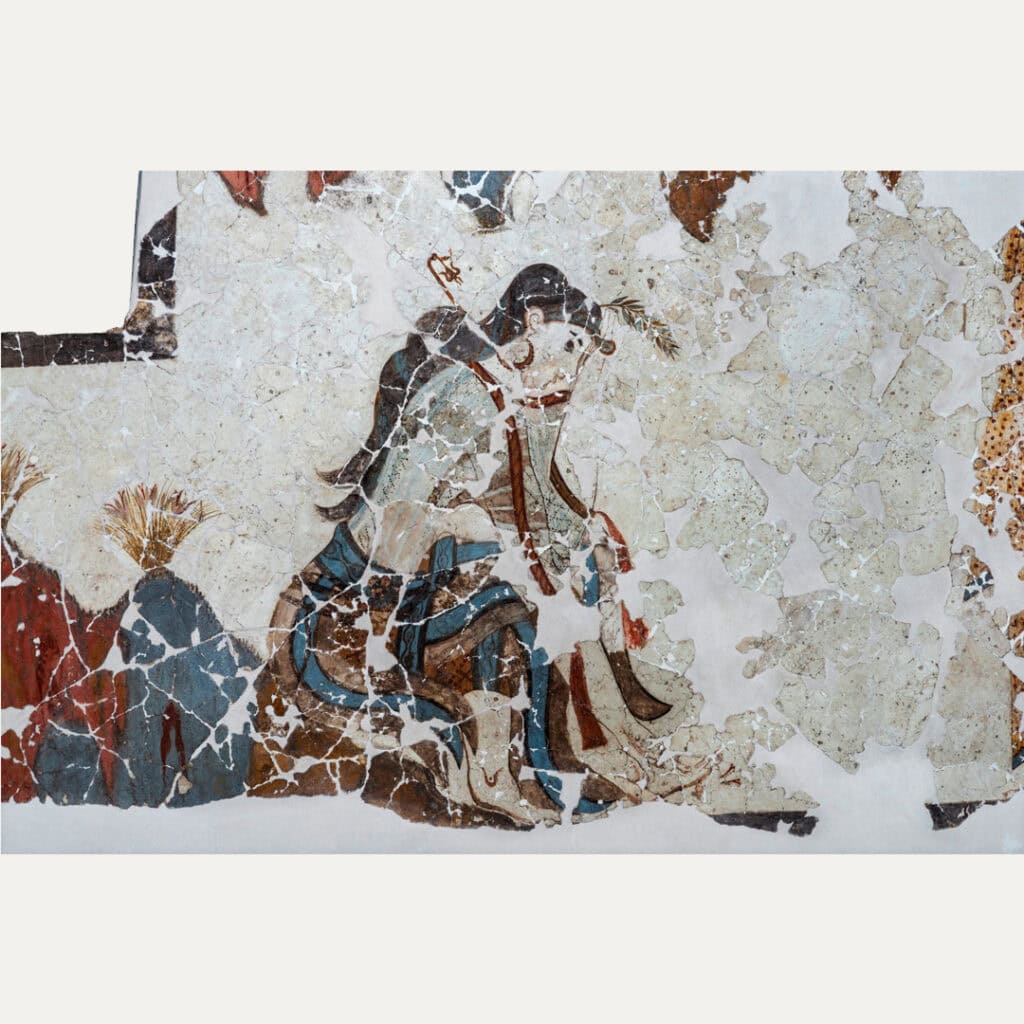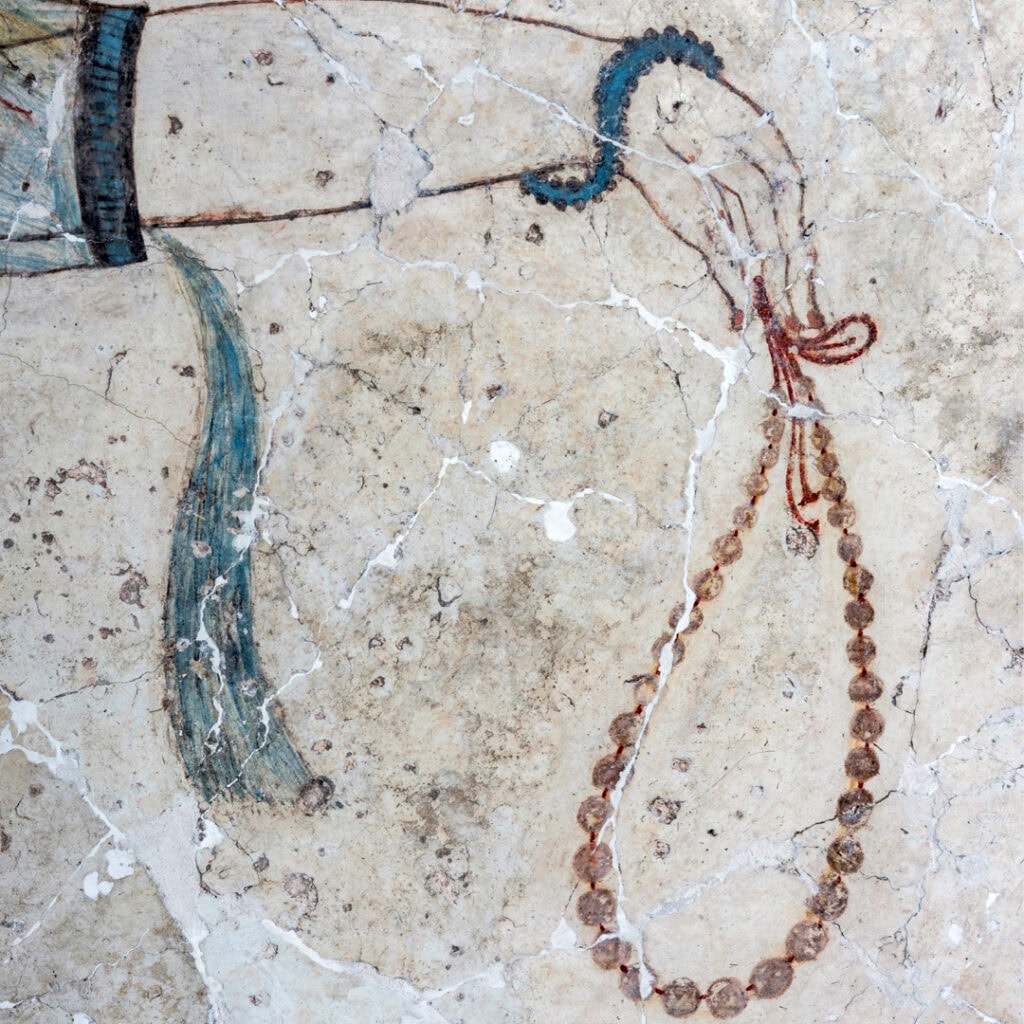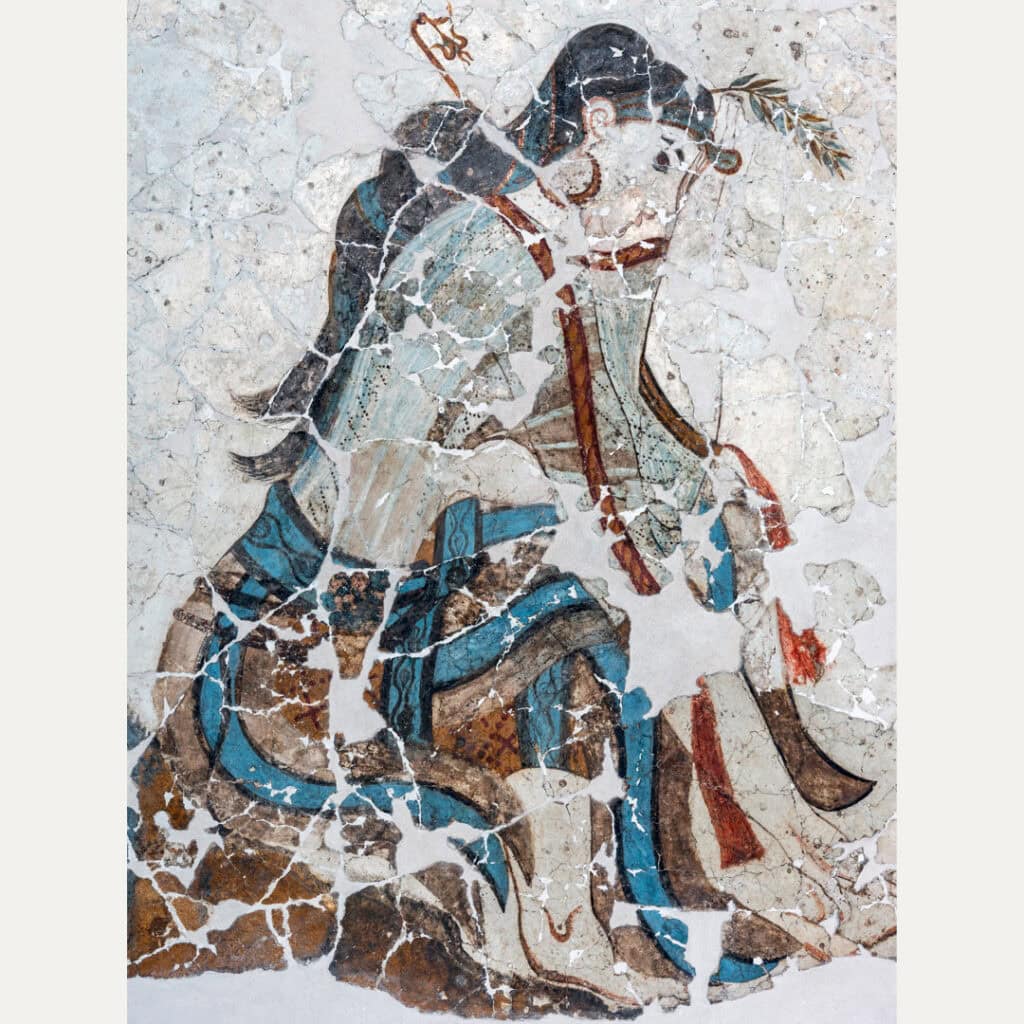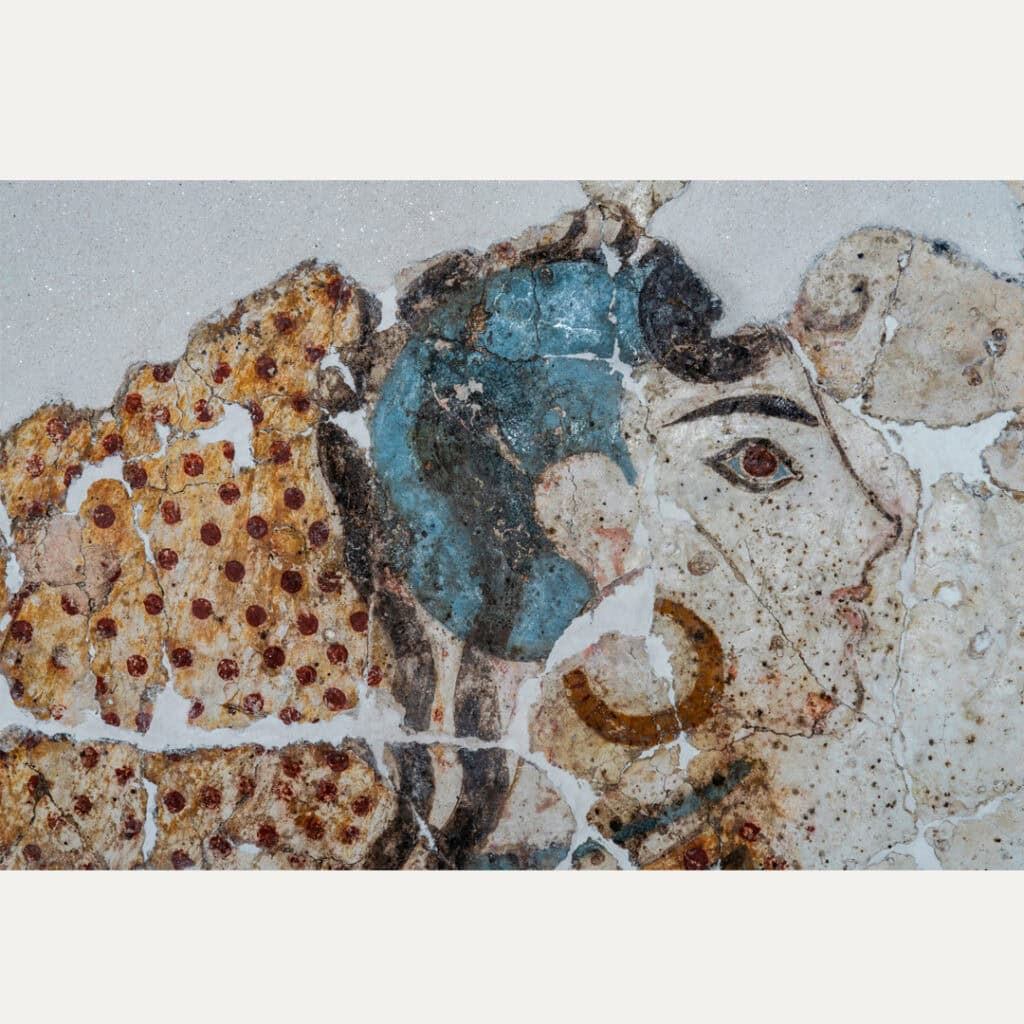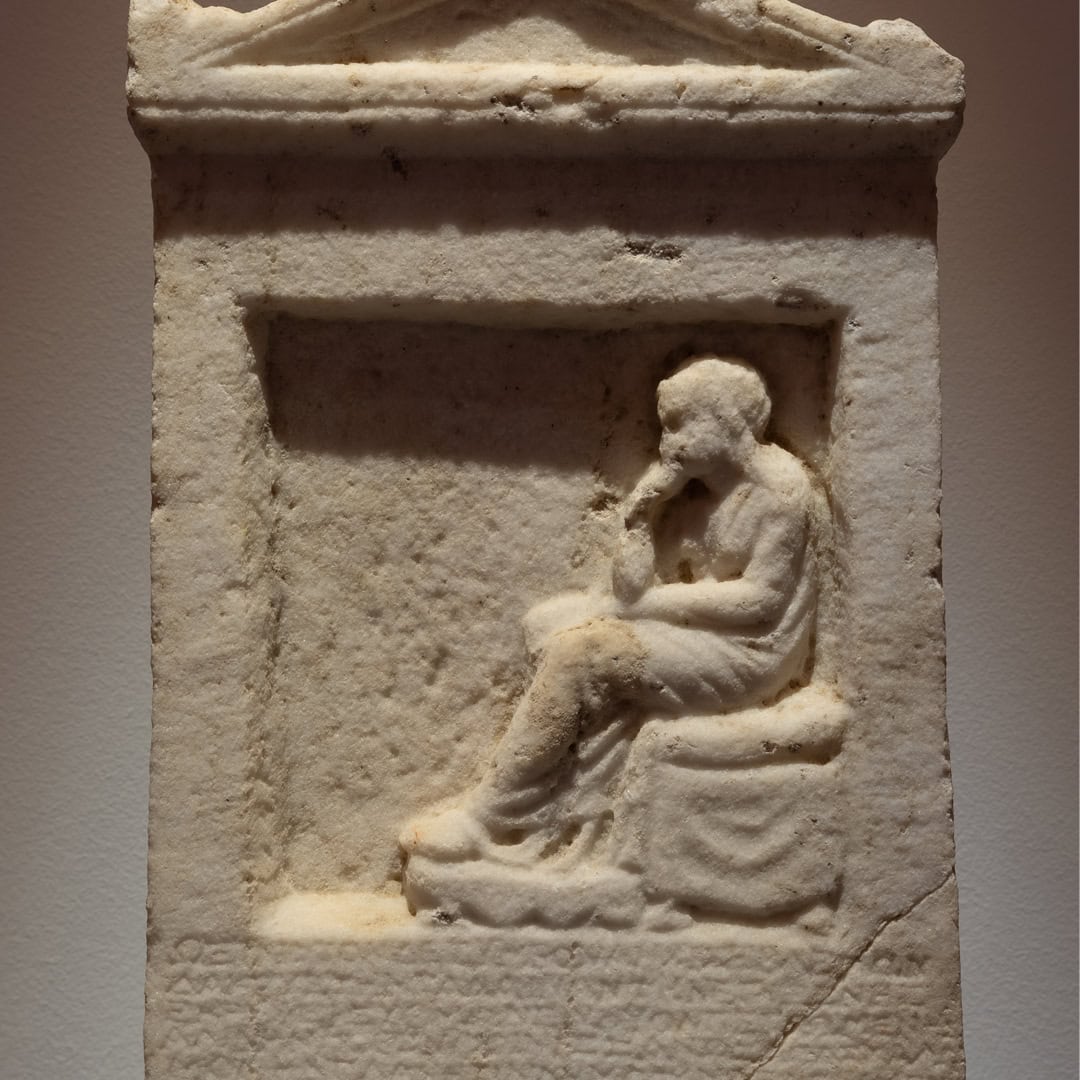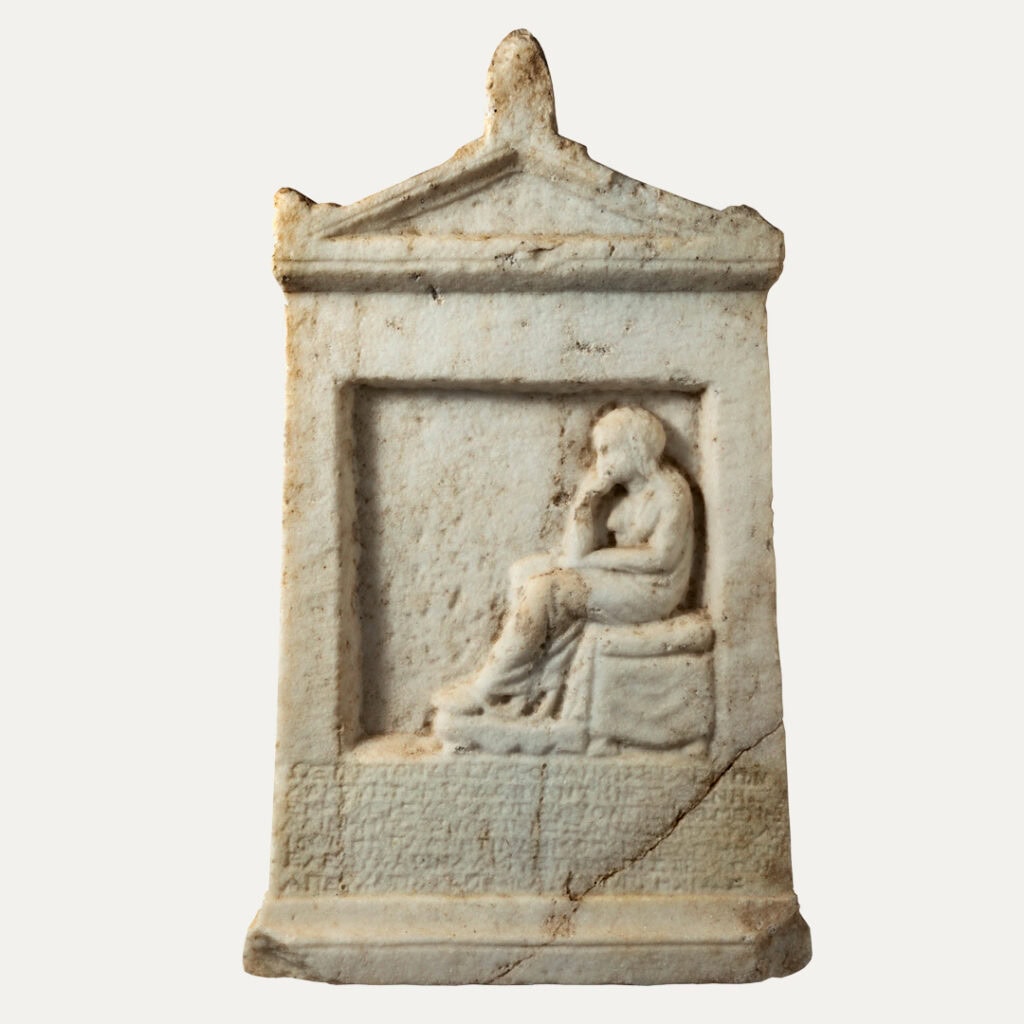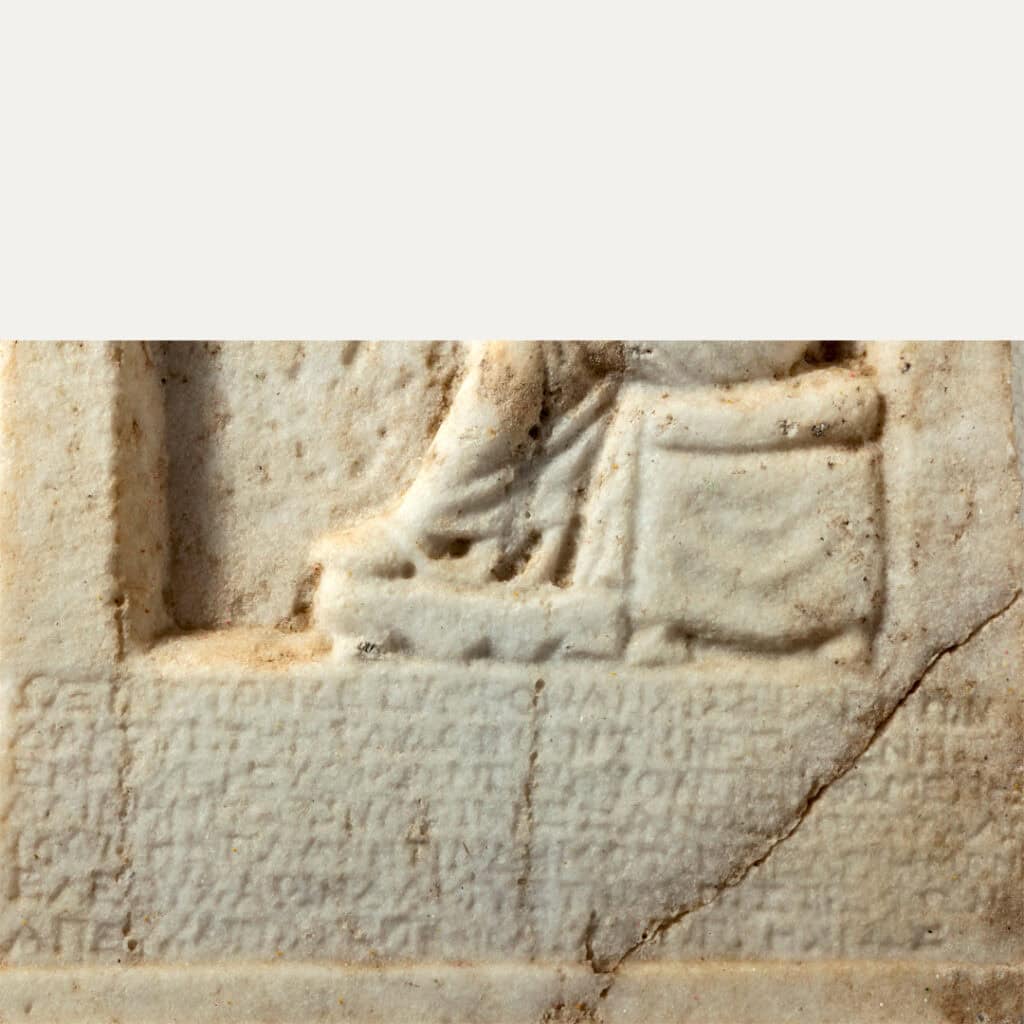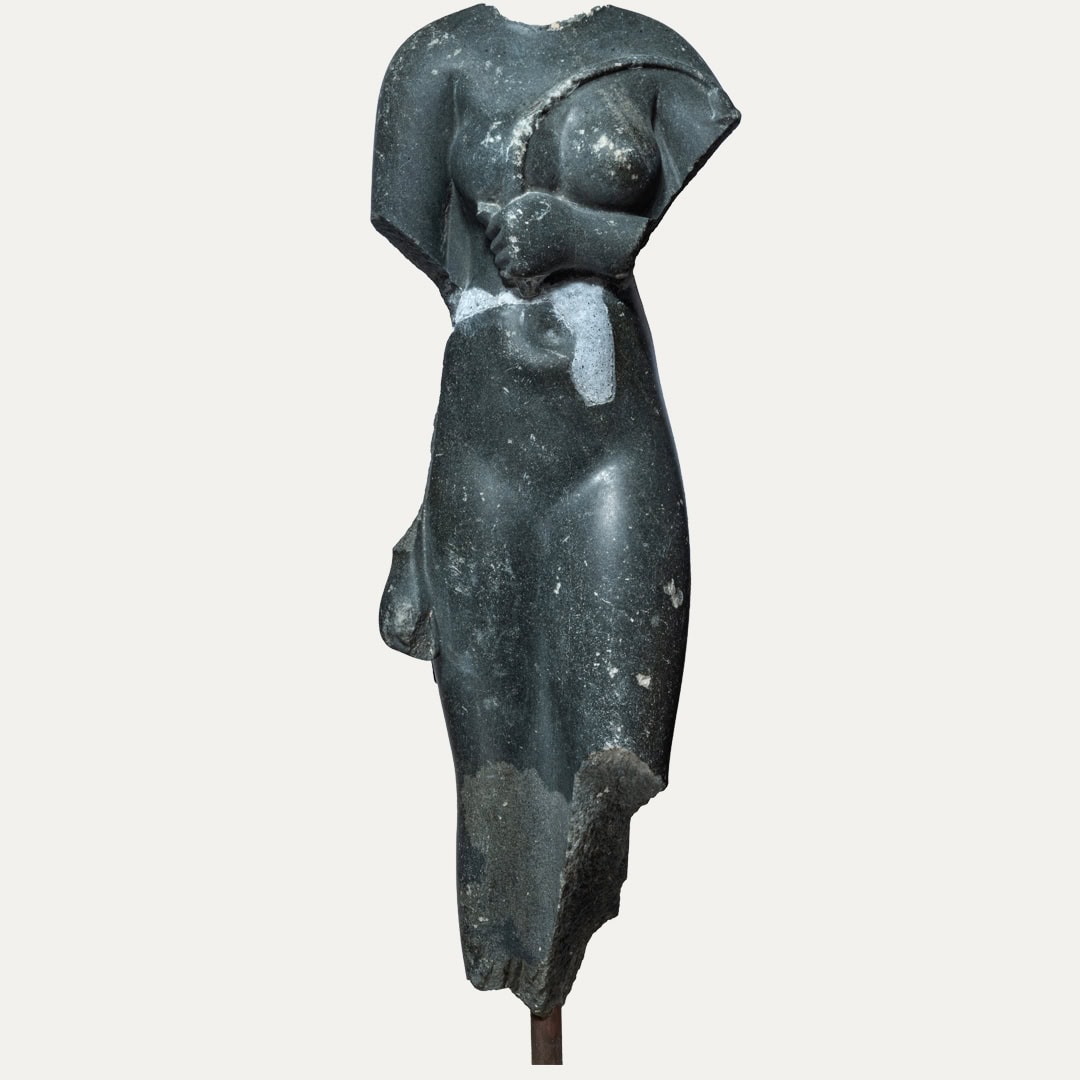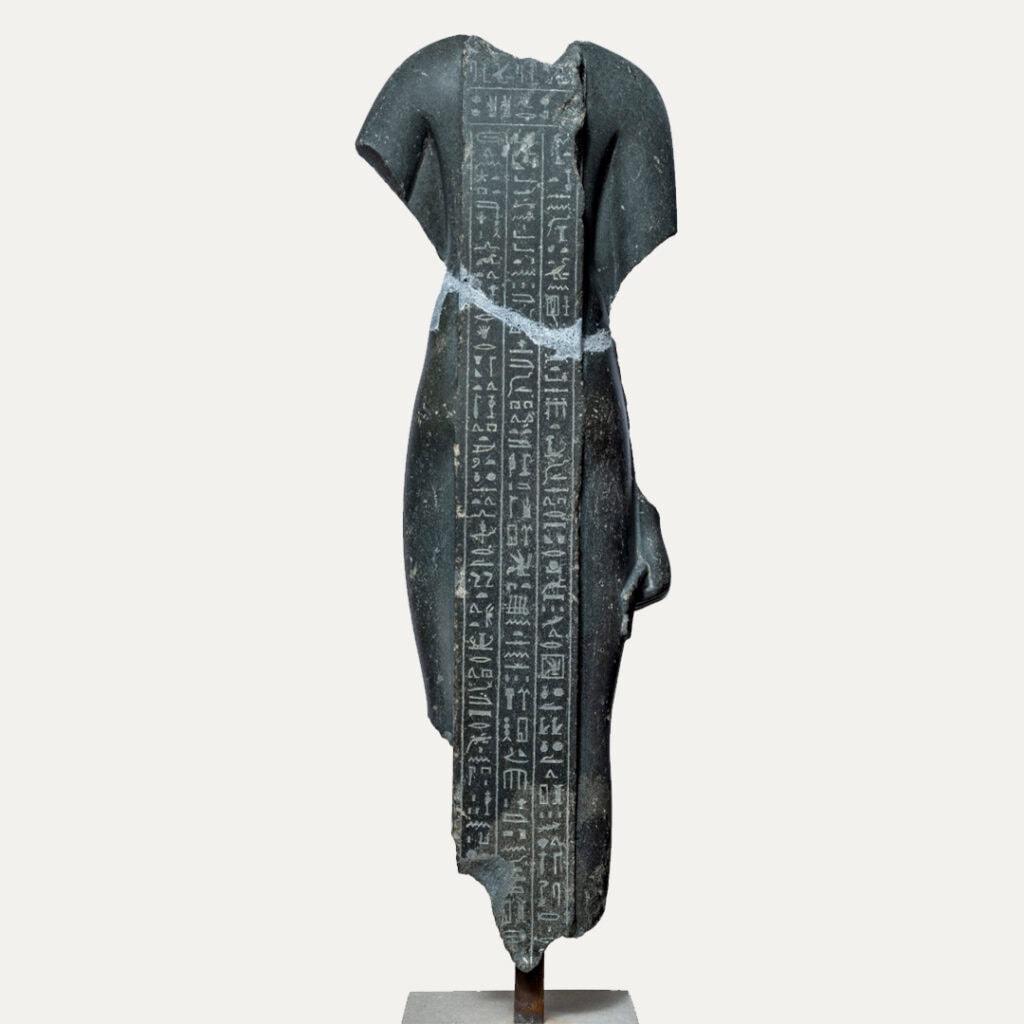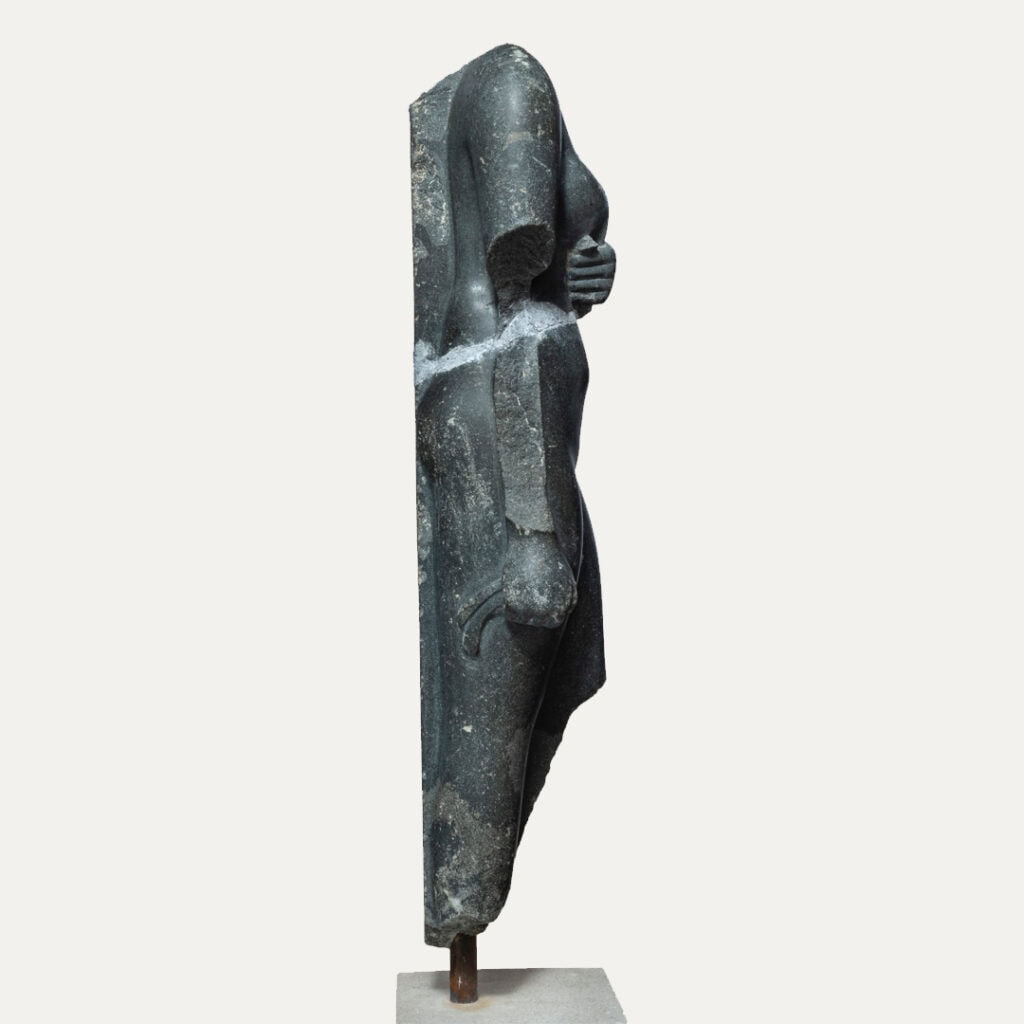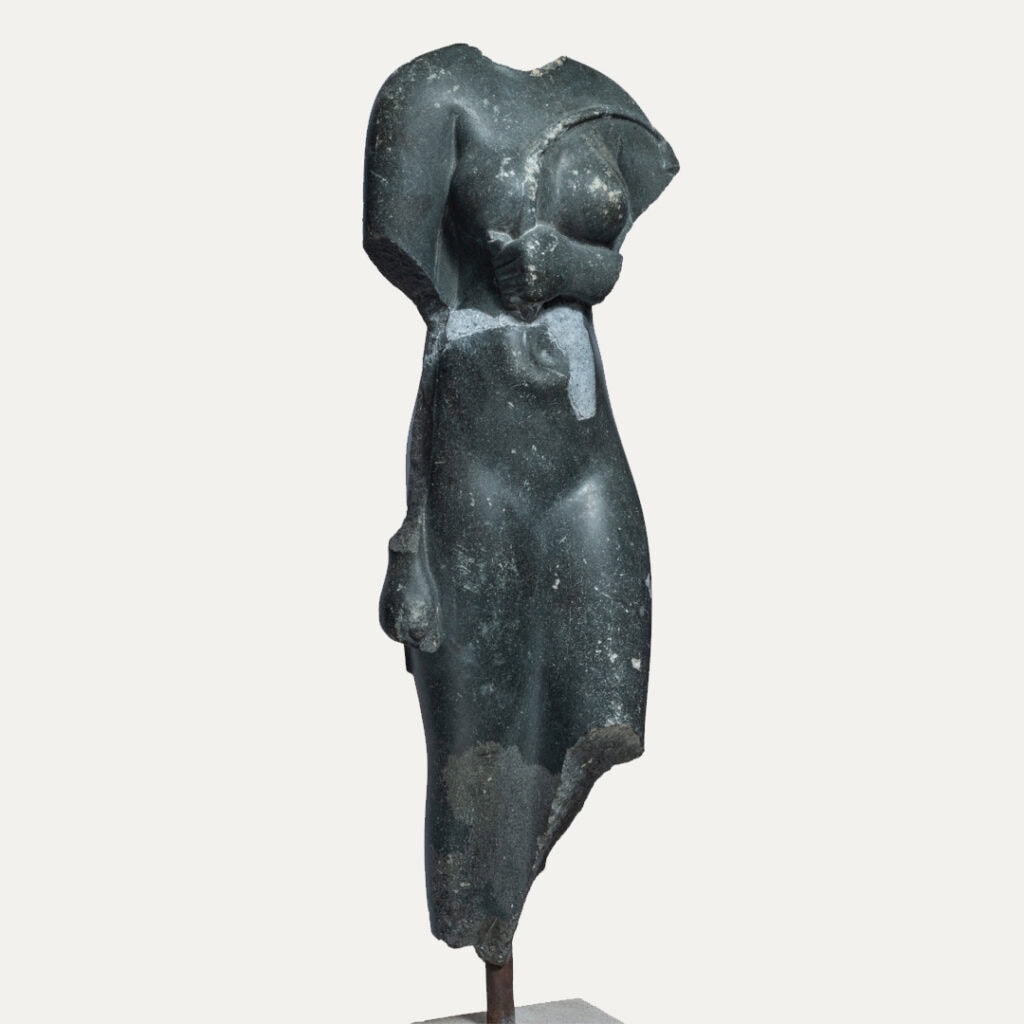HIGHLIGHTS
KORE OF THERA
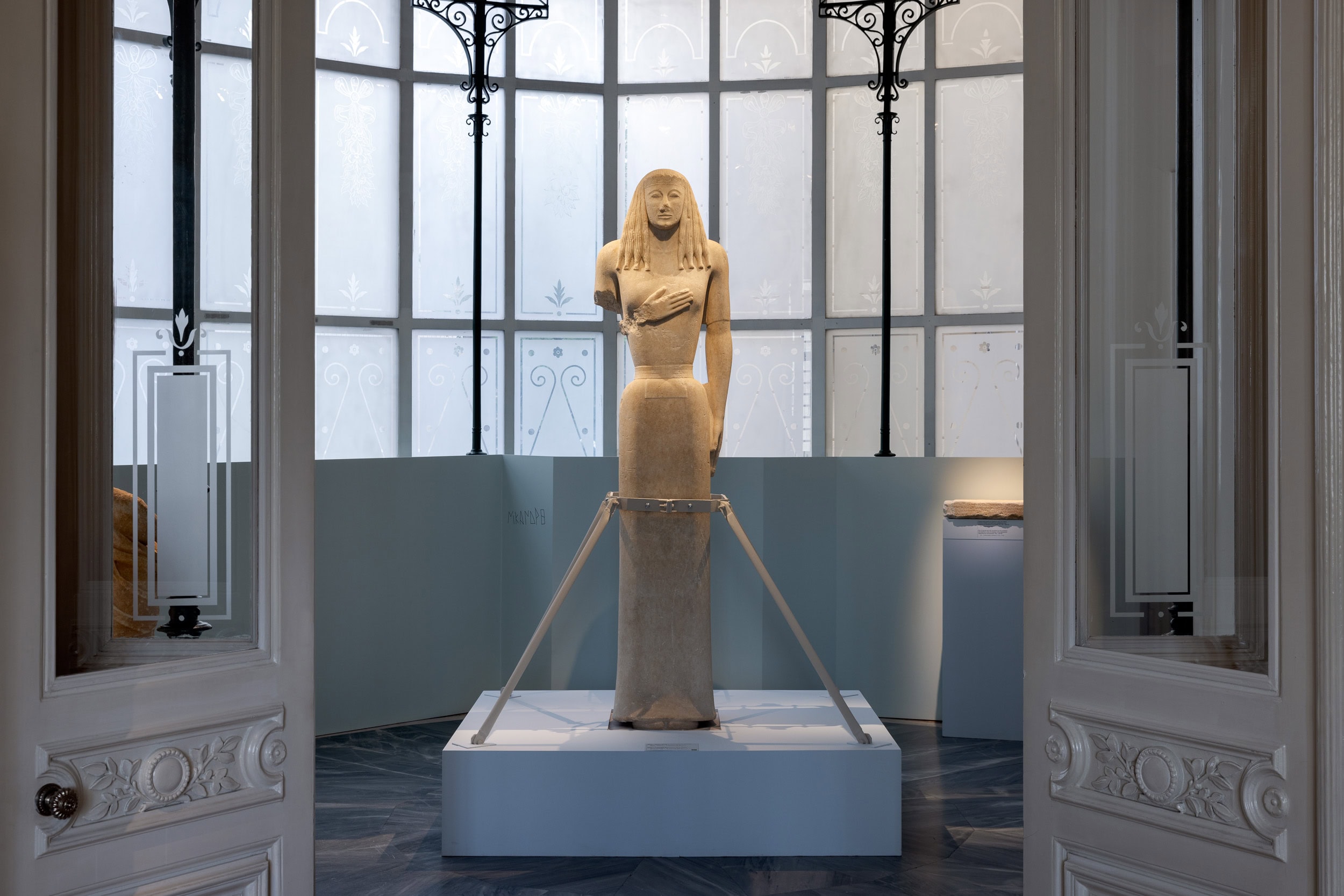
Τhe Kore of Thera is a work of unique artistic value presented to the Athenian audience for the first time.
She represents a Kore of the 6th century BC, almost 2.5 m tall, depicted in a full-length garment and with her right hand resting on her chest. The figure, almost untouched by time, leaves open the interpretation of its use.
The sculpture was discovered during a rescue excavation in the cemetery of the ancient city of Thera by the archaeologist Charalambos Sigalas. Made of Naxian marble, it was possibly intended to be a grave marker on the tomb of an eminent Theran woman. However, as the sculpture was not completed, probably due to an accident, during which her right hand was broken, it was buried at the place where it was to be erected.
According to another interpretation, the statue could have been intended for a sanctuary in the city’s entrance.
ARTEMIS
A star of the exhibition, Artemis is one of the dominant goddesses of the Cyclades, who was born with her twin brother Apollo on the island of Delos.
In the Iliad, Homer refers to Artemis as, “Lady of the Beasts,” the master and protector of young, wild animals, as well as the goddess of the hunt, as seen in this specific scene.
At times cruel and vengeful and at others, a protector of young girls, Artemis was honored and worshipped both on the sacred island of Delos and on the other islands of the Cyclades as a goddess who oversaw crucial moments in the cycle of women’s lives.
THE VIRGIN MARY RESCUES A SHIP
In the field of religion, the female deities and saints become one with the Cycladic landscape, acquiring new properties, relevant to the cult needs of the islanders. The Virgin Mary of the Christian faith becomes the patroness of sailors on their sea voyages.
A post-Byzantine icon from Melos vividly depicts the rescue of a ship by the Virgin Mary depicted holding the child Jesus. The votive inscription informs us that the Melian captain Georgios Karoutis thanks the Virgin Mary for saving his ship from an attack by a swordfish, which is depicted at the bottom of the icon striking the ship’s hull.
This is a rare case of an icon that was depicted on the wooden part of the ship that had been attacked, bearing the marks (holes) of the dangerous experience the sailors had on their voyage.
FRESCO OF THE WOMEN IN THE ADYTON
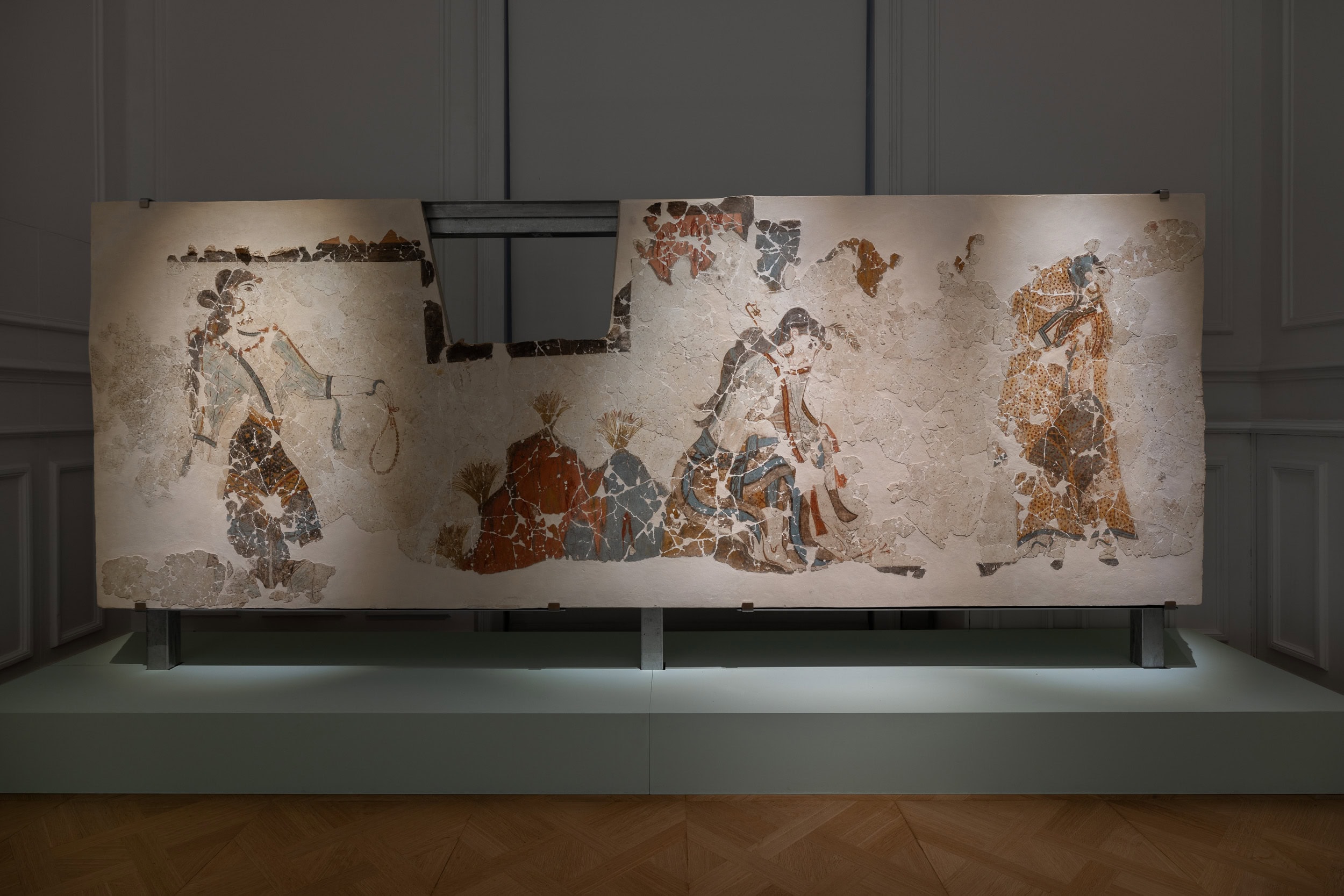
The fresco from the building Xeste 3 in Akrotiri, Thera (1600 BC) depicts three women walking in an initiation ceremony. The purpose of the ceremony was to introduce young girls and boys into the adult world.
The one who seems to be initiated is the young woman on the right, depicted with a shaved head and a few curls hanging from it, sign of her adolescence.
On the left, a standing woman holds a necklace (gift-bearer) and wears a Minoan-type garment leaving her breasts uncovered.
The focus of the representation is the woman in the centre who is depicted wounded and seated on a rock. It seems that she was exposed to the wild landscape of Thera and a rock injured her left foot, which is bleeding. From the drops of blood, a crocus flower springs up, towards which she turns her hand, as if seeking with it to heal her wound; a gesture that emphasises the miraculous birth of the flower from the blood of a woman-goddess, and highlighting the healing properties of the plant.
MARBLE STELE HONORING ALINE
A funerary stele depicts Aline, a traveller who arrived in the Cyclades and settled in Delos from the city of Ascalon in Palestine. The stele was the monument that decorated and marked her tomb in the 2nd century BC.
The epigram below the relief reveals her identity: her name is Aline, a woman who died far from her homeland, Phoenicia, while pregnant. The relationship between Aline and the commissioner of the monument who wrote the epigram, with which he invites the passerby to weep before her tomb, remains unknown. At the same time, this same man urges passers-by to thank him for burying her with true respect in her final resting place in the land of Rheneia.
The monument is a moving expression of how an immigrant woman became a Kykladitissa (woman of the Cyclades) as fate would have it, but points out also the filter of men over women, even beyond their death.
NESNEPHTHYS
A female migrant of the 3rd century BC, carved out of the deep green rock of exotic Egypt, arrives on the Aegean islands and becomes a Kykladitissa (woman of the Cyclades). On the back of the figure, there is a hieroglyphic inscription that reveals her identity. Her name is Nesnephthys and she is a “perfect musician”, born in an ancient Egyptian city, called Sais.
In the text she exhorts mortals – priests and worshippers – entering the temple where she had dedicated her statue to pay tribute to her. Then, she encourages them to pray with her for the smooth transition to Duat, namely the realm of the dead.
Her final destination is Delos and the Sanctuary of the Egyptian Gods where someone dedicated her as an offering to Isis, a goddess from her homeland, attesting of the coexistence of foreign and local cults in Cycladic society.
